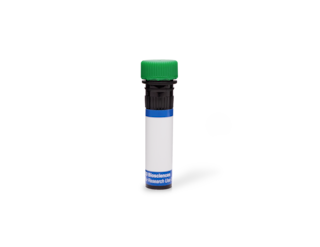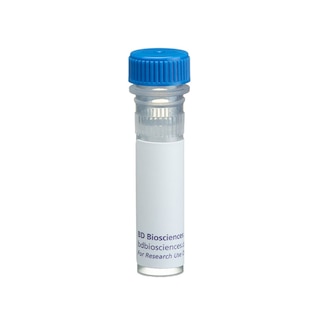-
Reagents
- Flow Cytometry Reagents
-
Western Blotting and Molecular Reagents
- Immunoassay Reagents
-
Single-Cell Multiomics Reagents
- BD® OMICS-Guard Sample Preservation Buffer
- BD® AbSeq Assay
- BD® Single-Cell Multiplexing Kit
- BD Rhapsody™ ATAC-Seq Assays
- BD Rhapsody™ Whole Transcriptome Analysis (WTA) Amplification Kit
- BD Rhapsody™ TCR/BCR Next Multiomic Assays
- BD Rhapsody™ Targeted mRNA Kits
- BD Rhapsody™ Accessory Kits
- BD® OMICS-One Protein Panels
-
Functional Assays
-
Microscopy and Imaging Reagents
-
Cell Preparation and Separation Reagents
-
- BD® OMICS-Guard Sample Preservation Buffer
- BD® AbSeq Assay
- BD® Single-Cell Multiplexing Kit
- BD Rhapsody™ ATAC-Seq Assays
- BD Rhapsody™ Whole Transcriptome Analysis (WTA) Amplification Kit
- BD Rhapsody™ TCR/BCR Next Multiomic Assays
- BD Rhapsody™ Targeted mRNA Kits
- BD Rhapsody™ Accessory Kits
- BD® OMICS-One Protein Panels
- Poland (English)
-
Change location/language
Old Browser
This page has been recently translated and is available in French now.
Looks like you're visiting us from {countryName}.
Would you like to stay on the current location site or be switched to your location?
BD Transduction Laboratories™ Purified Mouse Anti-Cdk1
Clone 1/Cdk1/Cdc2 (RUO)





Western blot analysis of Cdk1 on a HeLa cell lysate. Lane 1: 1:2500, lane 2: 1:5000, lane 3: 1:10000 dilution of the anti- Cdk1 antibody.

Immunoflourescence staining of human fibroblasts.




Regulatory Status Legend
Any use of products other than the permitted use without the express written authorization of Becton, Dickinson and Company is strictly prohibited.
Preparation And Storage
Product Notices
- Since applications vary, each investigator should titrate the reagent to obtain optimal results.
- Please refer to www.bdbiosciences.com/us/s/resources for technical protocols.
- Caution: Sodium azide yields highly toxic hydrazoic acid under acidic conditions. Dilute azide compounds in running water before discarding to avoid accumulation of potentially explosive deposits in plumbing.
- Source of all serum proteins is from USDA inspected abattoirs located in the United States.
Companion Products


Cdk1, also known as p34 [cdc2], is a ubiquitously expressed serine/threonine protein kinase. Cdk1/cdc2 has been identified as the catalytic subunit of the maturation-promoting factor (MPF), while cyclin B acts as the regulatory subunit. The binding of these two subunits is critical to the transition into M-phase of the mammalian cell cycle, and this factor's role is regulated by a series of phosphorylations and dephosphorylations. After binding to cyclin B, cdk1/cdc2 is phosphorylated on Thr-14, by Myt1, and Tyr-15, by wee1 or mik1, yielding an inactive pre-MPF complex. Phosphorylation of cdk1/cdc2 on Thr-161 is performed by a cdk7/cyclin H complex and is necessary for activation of the cdc2 complex. Dephosphorylation of Thr-14 and Tyr-15 by CDC25 occurs at the prophase/metaphase transition and completes activation of the cdc2/cyclin B complex, initiating the cell's entry into mitosis.
This antibody is routinely tested by western blot analysis. Other applications were tested at BD Biosciences Pharmingen during antibody development only or reported in the literature.
Development References (5)
-
Barboule N, Lafon C, Chadebech P, Vidal S, Valette A. Involvement of p21 in the PKC-induced regulation of the G2/M cell cycle transition. FEBS Lett. 1999; 444(1):32-37. (Biology: Immunoprecipitation, Western blot). View Reference
-
Garcia JF, Camacho FI, Morente M, et al. Hodgkin and Reed-Sternberg cells harbor alterations in the major tumor suppressor pathways and cell-cycle checkpoints: analyses using tissue microarrays. Blood. 2003; 101(2):681-689. (Biology: Immunohistochemistry). View Reference
-
Saitoh H, Pizzi MD, Wang J. Perturbation of SUMOlation enzyme Ubc9 by distinct domain within nucleoporin RanBP2/Nup358. J Biol Chem. 2002; 277(7):4755-4763. (Biology: Fluorescence microscopy, Immunofluorescence). View Reference
-
Takasaki Y, Kogure T, Takeuchi K, et al. Reactivity of anti-proliferating cell nuclear antigen (PCNA) murine monoclonal antibodies and human autoantibodies to the PCNA multiprotein complexes involved in cell proliferation. J Immunol. 2001; 166(7):4780-4787. (Biology: Western blot). View Reference
-
Uckun FM, Tuel-Ahlgren L, Waddick KG, et al. Physical and functional interactions between Lyn and p34cdc2 kinases in irradiated human B-cell precursors. J Biol Chem. 1996; 271(11):6389-6397. (Biology). View Reference
Please refer to Support Documents for Quality Certificates
Global - Refer to manufacturer's instructions for use and related User Manuals and Technical data sheets before using this products as described
Comparisons, where applicable, are made against older BD Technology, manual methods or are general performance claims. Comparisons are not made against non-BD technologies, unless otherwise noted.
Please refer to Support Documents for Quality Certificates
Global - Refer to manufacturer's instructions for use and related User Manuals and Technical data sheets before using this products as described
Comparisons, where applicable, are made against older BD Technology, manual methods or are general performance claims. Comparisons are not made against non-BD technologies, unless otherwise noted.
For Research Use Only. Not for use in diagnostic or therapeutic procedures.